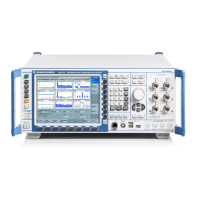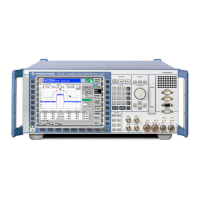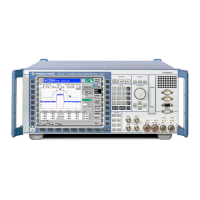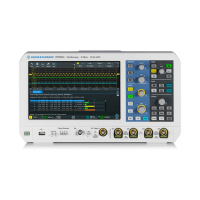System Overview
R&S
®
CMW500
56User Manual 1173.9463.02 ─ 06
setup. Some measurements provide additional parameters to account for variations of
the signal power (e.g. the "User Margin" for the GPRF Power measurement).
With an inappropriate setting of the expected nominal power, the measurement results
generally deteriorate:
●
If the "Expected Nominal Power" setting is too low, the RF input connector is over-
driven. This can cause unwanted responses in the input path.
●
If the "Expected Nominal Power" setting is too high, the RF input connector is under-
driven, which also impairs the accuracy of the measurements.
Analyzer Frequency
Sets the center frequency of the RF analyzer. This value must be in accordance with the
measured RF signal in order to obtain meaningful measurement results.
3.2.3 Statistical Settings
Measurements generally cover a basic time interval and can be repeated periodically.
The measurement interval depends on the measurement context.
The number of measurement intervals that the R&S CMW500 repeats in order to calcu-
late statistical results is termed "statistic count" or "statistic length" (multi-measurement
count). After one statistic count, the instrument has terminated a basic measurement
cycle ("single-shot" measurement). Measurement cycles can be repeated for an unlimited
number of times, resulting in the "continuous" repetition mode.
Most measurement contexts provide different sets of measurement results. They are
calculated as described in chapter 3.2.4, "Statistical Results", on page 57.
The statistical settings described below are set in the configuration dialogs assigned to
each measurement.
Statistic Count / Measurement Cycle
The statistic count (also termed statistic length) is the integer number of measurement
intervals per measurement cycle (statistics cycle, single-shot measurement). The length
of a measurement interval is measurement-specific. Conformance measurement speci-
fications often request a certain number of repetitions of a particular measurement. Select
the statistic count accordingly. The required statistics for the measurement is then
reached after one measurement cycle (single shot).
Measurement interval examples:
●
The measurement interval for the GPRF Power measurement is a configurable time
interval termed the Measurement Length/Step Length. This corresponds to either a
single power step (if no sequence mode is active) or a step sequence.
●
The measurement interval for the GPRF External Power Sensor measurement is the
time to request and obtain a single power result from the power sensor.
●
The measurement interval in most network test applications is related to a network-
specific periodic time interval, e.g. a timeslot or burst.
Measurements
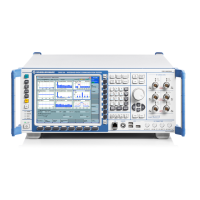
